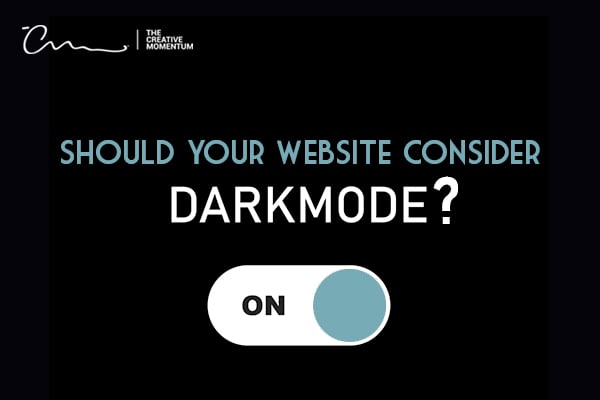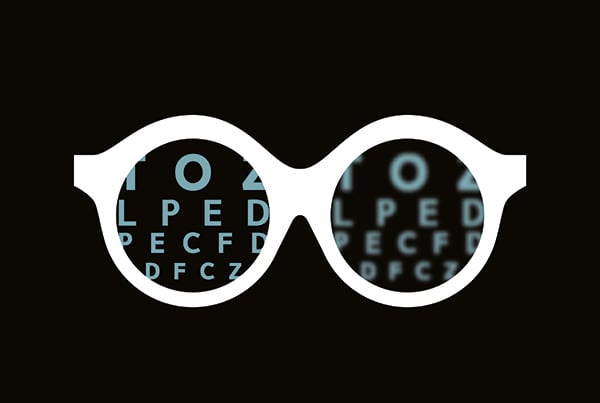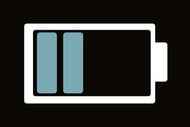
Dark mode—not to be confused with the Dark UX—is an increasingly common stylistic theme for websites, applications and devices. Its increase in popularity has seemingly cropped up everywhere - Apple iOS, Facebook, and Google Chrome just to name a few. Dark mode can is also known as night mode, light-on-dark, and shadow mode.
So now dark mode has returned, and (especially if you're in web design) you may be wondering what it is and if you need to be designing in website dark mode. The truth is: the jury is still out. Let's dive into dark mode and review the arguments for and against so you can decide for yourself.
What is Dark Mode?
For the unaware, dark mode involves replacing traditional black text/white backgrounds with the opposite: lighter colored text against a dark background. Where did dark mode come from? Believe it or not, in the early days of computing, dark mode was the standard. Raise your hand if you’re old enough to remember those old CRT monitors with scrawling green or white text. Eventually, word processors switched to white screens with black text to better imitate the look of ink and paper.
The Benefits of Dark Mode
Dark mode has plenty of advocates in its corner, usually pushing one of these three benefits as justifications for its use:
1. Dark Mode is Better for Eye Health
This is perhaps the most common argument you'll hear in favor of dark mode. It’s better for your eyes!
The logic makes sense; dark mode reduces the amount of harsh white light assailing your eyes and eliminates the stark contrast between black/white on-screen elements. But is it really better for eye health?
The evidence is spotty. Health experts are divided on whether dark mode is better for our eyes. Many pundits and journalists across the web cite research from a 2018 study at the University of Toledo that shows a possible link between retinal damage and a specific type of blue light emitted from our devices.
However, experts at the American Academy of Ophthalmology are quick to point out the flaws in this theory and note that we should be worried more about eye strain from excessive device use than blue light.
Overall, the jury’s still out on dark mode and eye health. It may be more comfortable for some, but it’s too early to make broad claims about supporting any type of ocular health.
2. Dark Mode Extends Battery Life for Some Devices
One area that’s not up for debate is how dark mode improves battery life on some devices.
Many smartphones are made with organic light-emitting diode (OLED) screens, which generate light for each individual pixel in the screen. Thus, when you have a dark display, you require the battery to produce less light.
The caveat here is that this applies only to OLED displays. Devices with liquid crystal displays (LCDs), an older technology than OLED, won’t see the benefits. Though most smartphones leverage OLEDs, many laptops and older desktop monitors still use LCDs, so the battery-saving benefits of dark mode will apply to only specific devices.
If you’re curious whether your smartphone has an OLED display, you can view a comprehensive list here.
3. Dark Mode Provides Design Clarity

A dark background can provide a different type of viewing aesthetic that may be more supportive of design clarity and long-term use. Apple has long claimed that dark mode is easier on the eyes and helps users focus on their work, and Google notes that dark mode “improves visibility for users with low vision and those who are sensitive to bright light.”
Taking these marketing messages together, this could suggest that dark mode offers a more accessible type of display that helps users get immersed in the design. Which stands to reason, if you’re the type to experience eye fatigue from excessive bright screens. A darker theme may allow you to get absorbed in the content you’re viewing more easily.
However, there isn’t concrete research on this, so your mileage may vary on this particular benefit.
Arguments Against Dark Mode
Not everyone is in love with dark mode, and there are certainly some arguments against its use:
1. The Health Benefits Are Overhyped
With so many people arguing that dark mode reduces eye strain and makes browsing easier, it’s easy to miss the fact that researchers are still divided on the topic.
In fact, there’s a case to be made that the traditional “light mode” is actually better for some of us who have certain eye conditions. According to British Columbia’s Sensory Perception & Interaction Research Group via Gizmodo, black text on white background can actually support visual clarity for readers with astigmatism – a common refractive error that affects 1 in 3 Americans.
For these users, the ink-and-paper approach may actually be easier on the eyes, casting some doubt on any broad claims that dark mode is always the preferred option for reducing eye strain.
2. There’s a Time and Place for Dark Mode
While dark mode is certainly popular, most of us would agree that there's a time and a place for it. It's ideal for browsing in the evenings as you're getting ready for bed or in low-light situations that favor discreteness. But have you ever tried looking at a dark mode display in bright sunlight? Any benefits to accessibility or visibility go right out the window.
Bright lights tend to wash out dark mode displays a little more than traditional layouts. This is a small drawback, to be sure, but it’s one worth noting for those who love dark mode. If you’re doing a lot of daytime browsing, you might find that dark mode actually increases your eye strain due to how hard the characters are to see.
The Verdict on Dark Mode
As with many aspects of the website and mobile UX, the choice comes down to personal preference. Some enjoy the longer battery life that dark mode offers, while others find the dark backgrounds to be an annoying distraction from the traditional displays they’re accustomed to.
There are cases to be made for and against its use, and at the end of the day, it comes down to your audience. Is this something your users have requested? Is it something they’ll actually use? Most of the big name players like Google, Apple, Facebook, and more have defaulted to including the option to keep their bases covered. Maybe your own website or application may need to do the same to accommodate the growing base of dark mode fans.
Fortunately, website dark mode is a relatively simple UX update, particularly when you work with a creative agency that has experience with its use.
If you’re thinking of adding a dark mode theme, or making any other change to your UI, start by contacting our team at the Creative Momentum. We’ll walk you through the steps and ensure that all changes are implemented in a quick and cost-effective way.




